Your cart is currently empty!
Unpacking Fashion History in a tiny Sash

There is macro history—mostly occupied by men’s stories of trade and conquests.
And there is micro history which delve into the tiny details of everyday life that can open up a whole new world of insights into cultural exchanges.
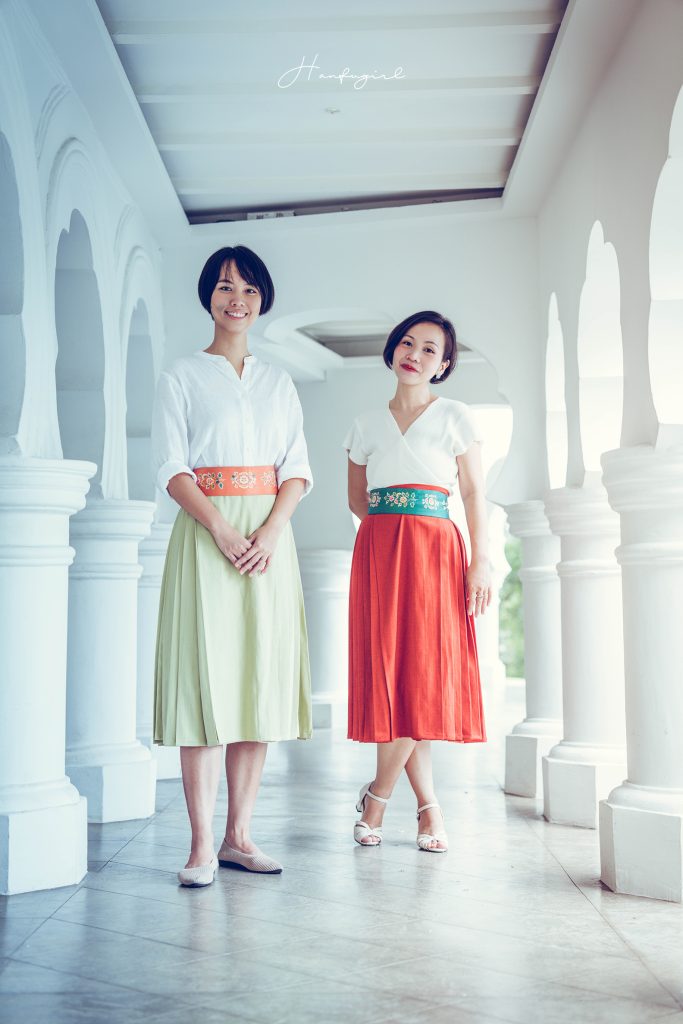
Fashion history is very much about micro history and you’d be surprised how much of a cultural symbolism a tiny sash can be.

We’re halfway through our kickstarter campaign to make a waist sash (self-tie style obi style) that is inspired by an actual silk sash in the collection of the Shosoin Repository. And this post gives you a full dose of its history and cultural connections.
ORIGINAL OWNER
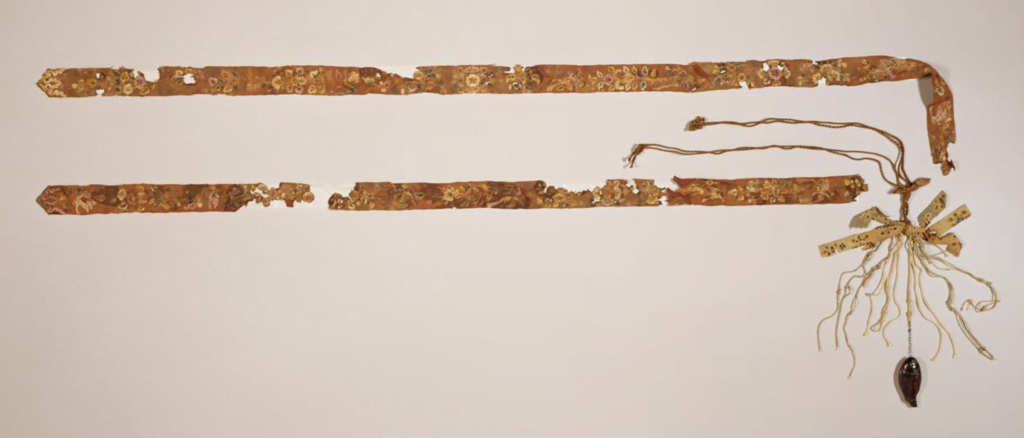
Based on a record that explained the origin and meaning of Chinese words some 1,900 years ago, men would be wearing sashes/belts made of leather, while women would’ve worn silk ones. So silk sashes in the collection of the Shosoin Repository would most certainly belonged to a woman of the period in Japan. Since most of the items in the collection were made in Japan, it is likely that this sash too, was modelled after the ‘à la mode’ patterns, motifs and techniques of that time, brought to Japan from China after the Tang Chinese had taken in all the western influences and fused with their own.

Notice the fish token on the right? If you’ve attended Yanzilou 2021, you might have the chance to interact with us and know that fish was an important token during the period. In the Tang dynasty court, the wearers of a special fish symbol (the fish token/ a fish pouch) could enter into the imperial palace (including courtesans/entertainers), while the ones without would not be able to be granted access.
Although the Japanese tried to replicate the Chinese law system of Tang era, it appears that this particular system of dressing in the Tang court was not implemented in Japan. Instead, it became more of a fancy accessory to the aristocratic women of ancient Japan, and it did not have any bearing on their eligibility to enter the imperial Court unlike in the case of the Chinese.
WHY FISH?
Originally, important symbols and seal-tokens such as ones that enabled someone to command armies, would have been made in the image of a tiger (below image was an artefact from around 2,100 years ago, some 800 years before the Tang dynasty our period).
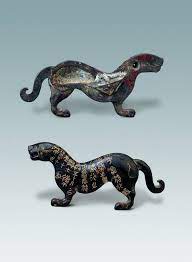
Then somewhere down the road, just before the Tang period, they started to evolve into RABBIT SEALS! Very opportune, will be talking more about rabbits in historical artefacts in time to come!
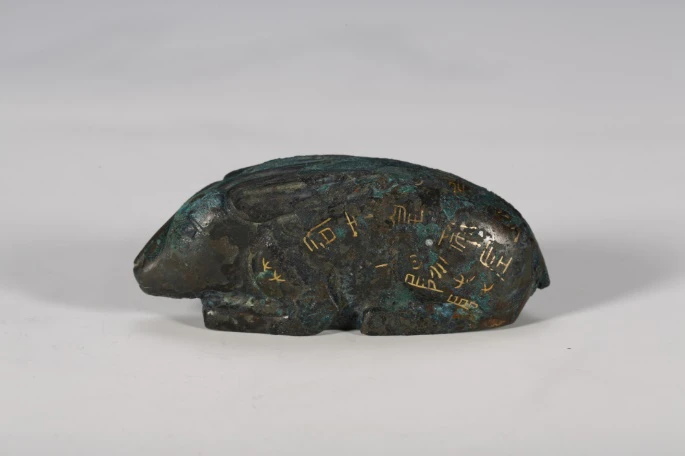
So what about Fish? Again, if you have watched Yanzilou (2021), you might know that the carp was especially auspicious during the Tang period because its Chinese name is called the “Li” fish, and Li sounds the same as the surname of the Chinese Tang Imperial family, so it was deemed extremely auspicious. Of course, you would be dead if you tried to eat a carp, cos.. eating carp= eating the Imperial family but there are many other options anyway, and it is only a particular type of carp that is forbidden.
Push comes to shove, I won’t fuss about this ban.
At one point, during the reign of the first and only female emperor of China—Emperor Wu’s time— it was also popular to use turtle seals. Sharp-eyed Chinese speaking readers would probably think of the Chinese term “The Golden Turtle Son-in-law” 金龟婿 which refers to a rich/influential/powerful son-in-law. Yes, it came from this idea that the bearer of such seal-token would’ve been someone very influential and powerful.
THE SYMBOLISM OF A SASH AND THE MOTIFS ON IT

There were several mentions of the use of sashes in Tang dynasty poetry which talked about silk sashes/obis being symbolic of the reunion and sorrowful parting between lovers. It was used to represent the tight bond between the two by ways of tying their sashes together like how their souls are connected in such a manner and hard to undo.

The motif of flowers intertwining with its vines and branches were also often referenced in Tang poetries of the period, and symbolised the unwavering love, deeply intertwining and strong entanglement between two lovers.

The Chinese had floral and cloud patterns in its indigenous motif designs, but that took on influences from Central Asia during the 3rd century or so. The Central Asians, in turn were influenced by the Greek architectural ornaments.
Below showcase some of the elements that were fused together to form the type of flowers we started to see during the 7-9th century.
Leftmost was the cloud motif of a Western Han tomb around 2,000 years ago. And the other two are Ionic and Corinthian pillars of the Greeks. Somewhere between all of these styles, emerged a floral pattern that didn’t resemble any particular type of flower, yet had the different elements combined to create an imaginary type of flower.



The colourful gradients that filled the design is also something that developed during this period. Traditional Chinese style were generally rather monochromatic, and you can still see the traditional Han aesthetic in the Chinese paintings as opposed to the colourful West/ Central Asian ones.

Having them arranged in a circular pattern like a mandala is also something that the Tang dynasty patterns took on quite seriously.
The original sash was weaved silk, which meant that more decorative patterns could be incorporated as part of the design as compared to the men’s leather ones. This piece was also considered one of the finest example of silk sashes in the entire collection of the Shosoin Repository due to its intricate gauze weave that was extremely light and the embroidery work.
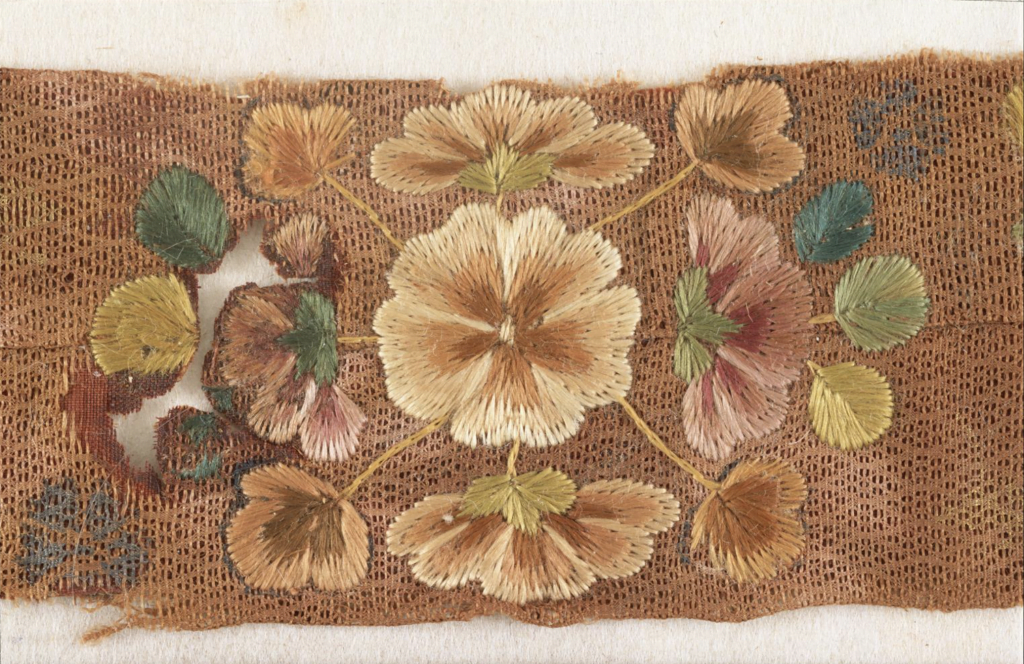
The mandala, which we often associate with meditation and Buddhism, is an Indian influence brought to China along with the Buddhist religion. Although the Chinese rulers of the period were Taoists, Buddhism was highly regarded and practised amongst the general population. You can see it as having the kind of status equivalent to Christianity in East Asia today.

OTHER DETAILS IN THE MAKING
The original sash is made of silk, and 2.6m long x 4cm wide. It was originally an embroidered piece with clamp-resist dyeing pattern in the background—a technique that was iconic of the Chinese Tang period (and also the Japanese Nara period).

As if all these techniques of decoration isn’t enough, it was further decorated with gold and silver paint. And you can still see such technique being used on kimonos.
There was a poem by late Tang poet, reminiscing about his time with courtesans and her gold-painted sash, and it goes to show that gold-painted sashes were definitely an iconic accessory in the lives of aristocrats and courtesans (women of style).

Coincidentally, this bag in my collection repurposed from silk kimono has very similar decoration in gold paint, of little birds. And I would imagine that these gold paint on the silk sash might have looked similar to the ones on the kimono bag:

The past is a safe space that we revisit over and over again in our imagination, often adding great romanticism to it. And the silk road is probably one of the most romantic term invented for this trade route of cultural exchanges between the West and the East with Japan being the Eastern end of it.
It is exactly with these rose-tinted lens that we started this campaign to make 100 sets of this sash at a much lower price than if we were to do it on-demand.
The sash is a great way to remind us of the beauty and vibrancy of cultures. It’d also make great twinning sash for couples/siblings/friends. After all, such sashes used to symbolise strong love and bond between two.
With only 2 weeks left to the end of the campaign, if you’re interested, do support us on Kickstarter! It will also help us determine the feasibility of future fundraising efforts such as a book on women in Chinese history, a live experience of Yanzilou (Tang courtesan house) and more!

Leave a Reply